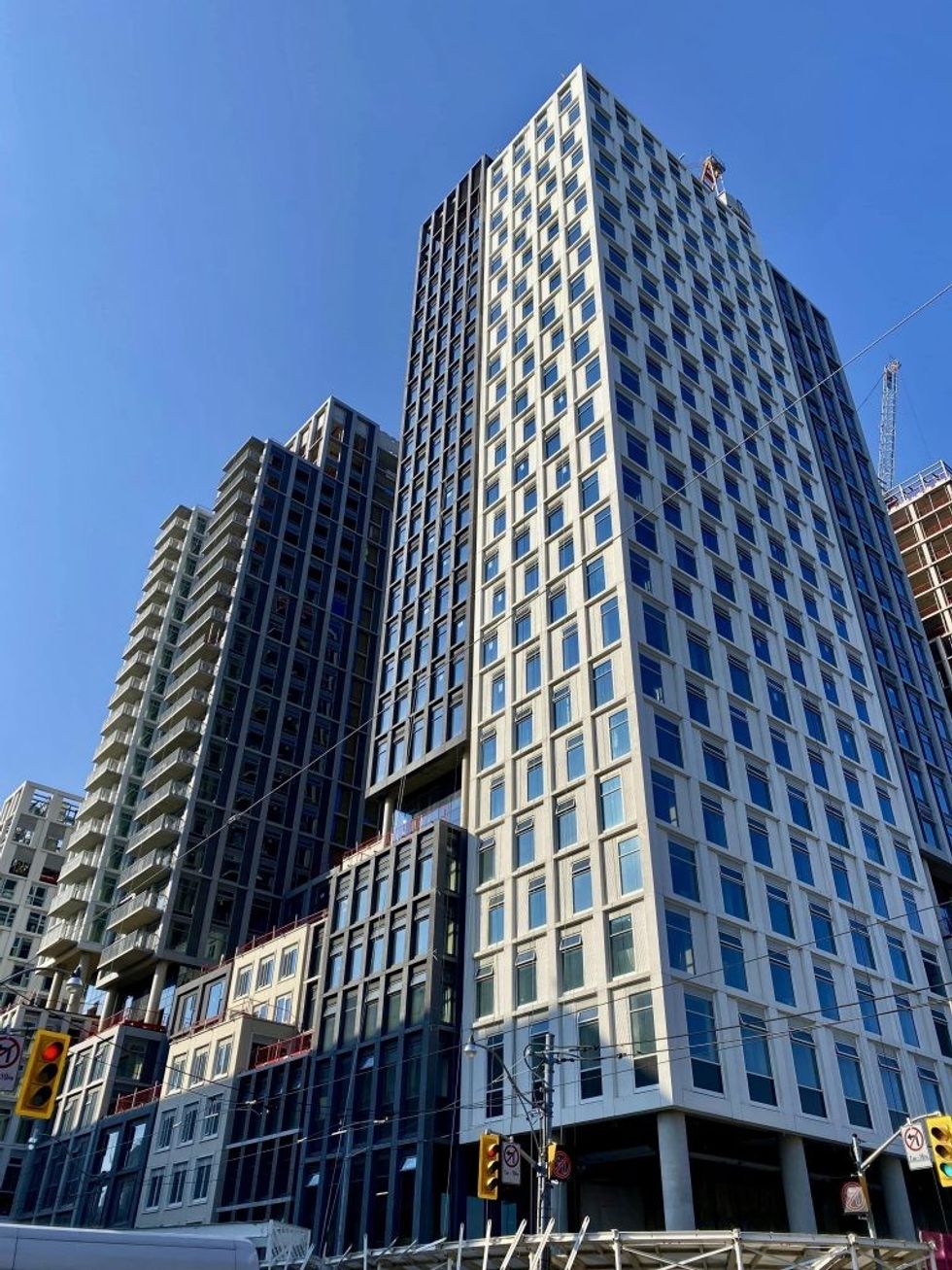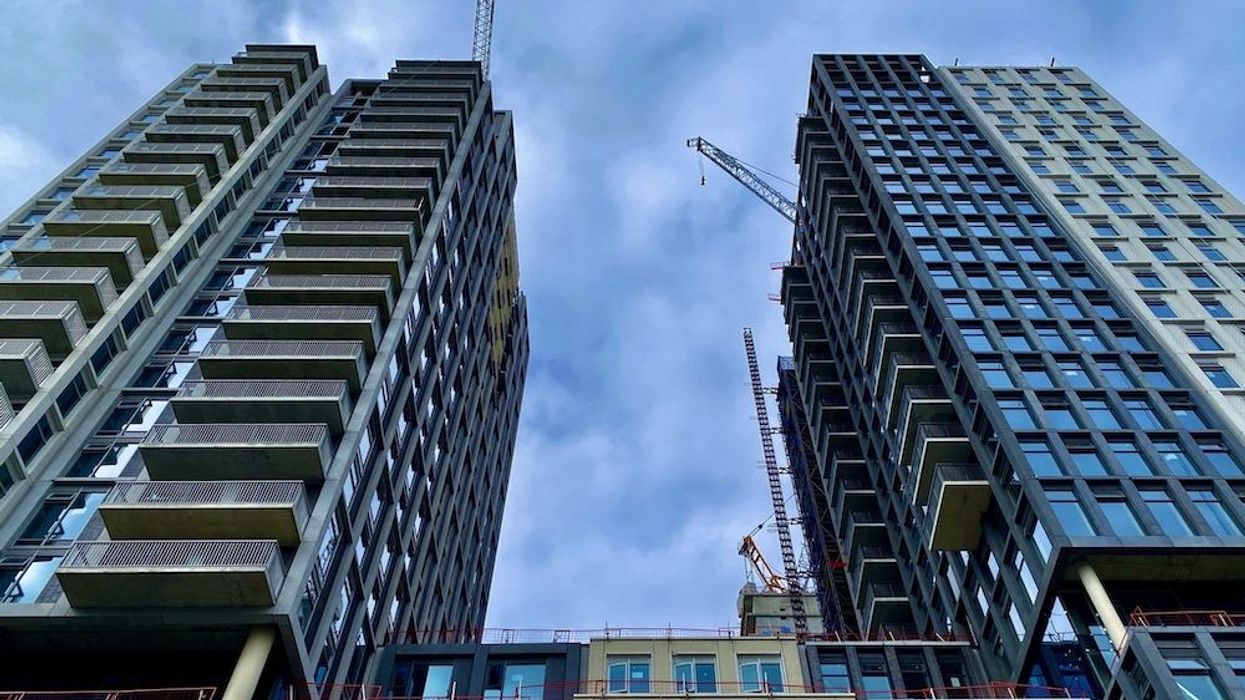Mirvish Village, the massive mixed-use development under construction at the former site of the old Honest Ed’s discount department store, is expected to welcome its first residents next year.
The multi-tower project at the southwest corner of Bloor and Bathurst streets is set to include about 900 purpose-built rentals -- more than a third of which will be designated as affordable.
Yet with rents soaring across the Greater Toronto Area, demand for these lower-priced units is likely to be off the charts once they become available.

Mirvish Village developer Westbank Corp. says one batch of 100 units will rent for 80% of the average market rent (AMR) in Toronto and will be available through an application process.
Of those units, 85 are being subsidized by the city of Toronto and will include 21 studios, 46 one-bedrooms, 15 two-bedrooms and just a few three-bedrooms, according to information provided to STOREYS by the city’s Housing Secretariat.
How Tenants Can Qualify
To qualify for one of the apartments, applicants must have a net annual income no higher than four times the annualized monthly occupancy cost for the unit. Based on that formula, if a two-bedroom apartment is priced at $1,362 per month, a tenant can earn no more than $65,376 per year. Rents will be adjusted annually by the city for 25 years.
Prospective tenants will be able to register an “expression of interest application” for 37 of the units that will be open to the public, according to the city. Once selected in a random draw process, applicants will be asked to submit a full application. In addition, 48 units will be set aside for referral partnerships with local non-profits.
The 85 units are part of Toronto’s Open Door housing program, which provides incentives such as capital funding, property tax relief and fee exemptions to developers who build affordable housing.
The remaining 15 units to be priced at 80% of average market rents will be provided by the developer and available once their buildings are completed.
Under a separate batch of affordable units, 266 apartments will be leased at rates no higher than 30% of the median household income. These units will be leased on a first-come, first-served basis once their buildings are completed, Ariele Peterson, a spokesperson for Westbank, said in an email to STOREYS.
Further details will be forthcoming, Peterson says.
Will They Be Affordable Enough to Make a Difference?
The affordable units at Mirvish Village were announced in Jan. 2020 when the Canada Mortgage and Housing Corp. finalized an agreement with Westbank and co-developer Peterson Group to provide $200M in financing through its Rental Construction Financing Initiative. The program offers low-cost construction loans to developers building affordable rental housing.
One of the ways for a developer to qualify for the financing is to ensure at least 20% of a project’s units have rents below 30% of the median total income of all families for the area for at least 10 years. That figure was $96,700 in 2020.
When developers receive financial or tax incentives to build lower-cost housing, the number of units they designate as affordable are often not enough in relation to actual demand — especially given Canada’s growing population of immigrants and slow-growing wages, says Prentiss Dantzler, a University of Toronto sociology professor who studies housing affordability.
The ones who need affordable apartments the most, he says, typically aren’t the ones who benefit.
“More affordable rent would be 50 or 75% of what that AMR really is because of the stagnant wages we have in the city and the increased demand across the city in almost every neighbourhood,” Dantzler says.
City of Toronto data show the average market rent for a one-bedroom apartment is $1,446 and $1,703 for a two-bedroom.
Yet another source pegs average rents for one- and two-bedroom units at $2,043 and $2,708, respectively.
As politicians call for more programs to control rising rents, Dantzler says cities must do more.
“In this last provincial election, housing was the number-one issue but a lot of the plans that people were putting out were just ‘We’re going to build 1.5M units,’” Dantzler says. “If you’re not gearing them toward affordable housing units then that's really not changing the overall nature of how this market really works.”


















